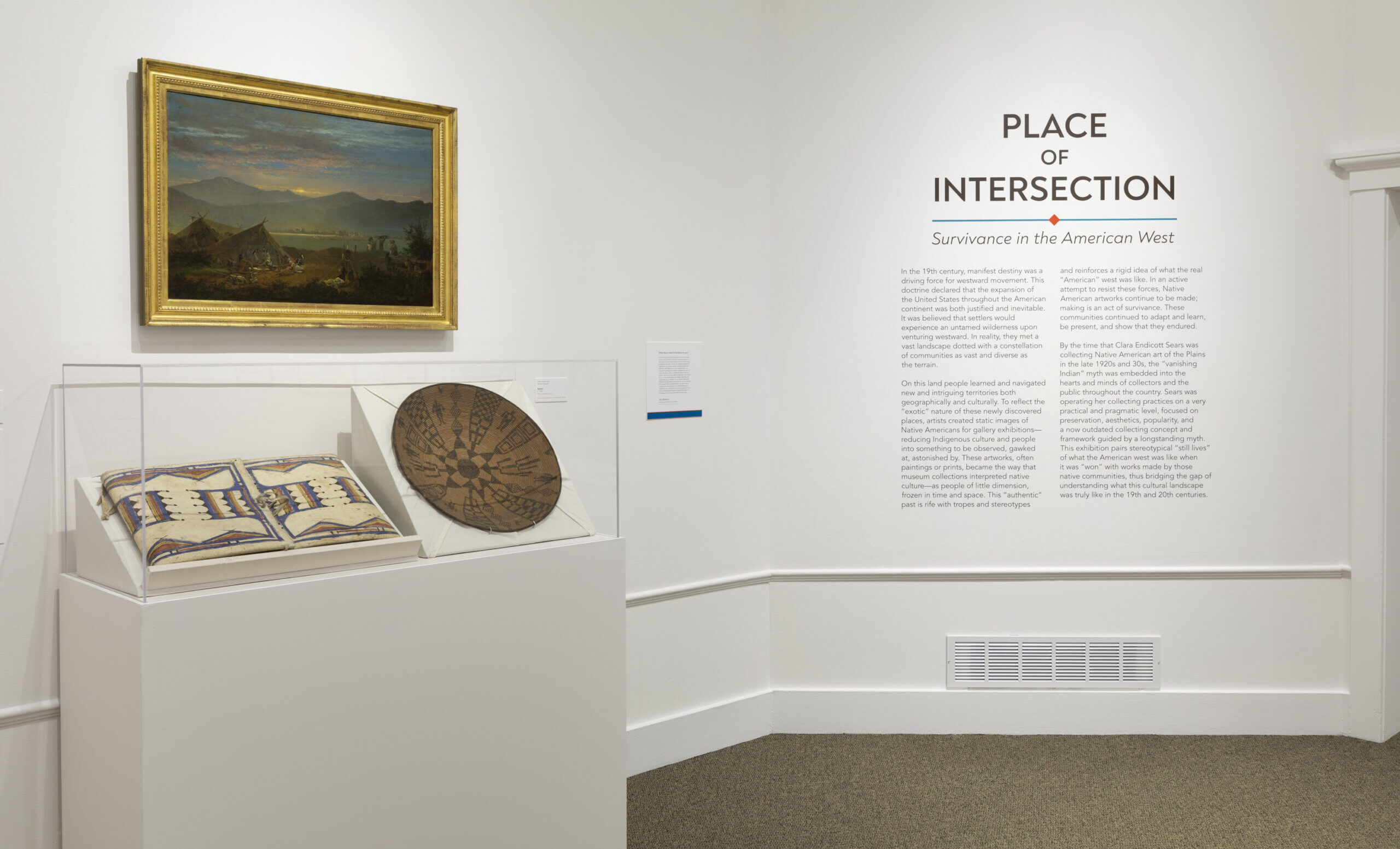Ongoing Exhibit (Until May 5, 2026)
Place of Intersection: Survivance in the American West

Ongoing Exhibit (Until May 5, 2026)

In the 19th century, manifest destiny was a driving force for westward movement. This doctrine declared that the expansion of the US throughout the American continents was both justified and inevitable. It was believed that settlers would experience an untamed wilderness upon venturing westward. In reality, they met a vast landscape dotted with a constellation of communities as vast and diverse as the terrain.
On this land people learned and navigated new and intriguing territories both geographically and culturally. To reflect the “exotic” nature of these newly discovered places, artists created static images of Native Americans for gallery exhibitions– reducing Indigenous culture and people into something to be observed, gawked at, astonished by. These artworks, often paintings or prints, became the way that museum collections interpreted native culture – as people of little dimension, frozen in time and space. This “authentic” past is rife with tropes and stereotype and reinforces a rigid idea of what that the real “American” west was like. In an active attempt to resist these forces, Native American artworks continued to be made; making was an act of survivance. These communities continued to adapt and learn, they continued to be present, and show that they endured.
By the time that Clara Sears was collecting Native American art of the Plains in the late 1920s and 30s the “vanishing Indian” myth was embedded into the hearts and minds of collectors and the public throughout the country. Clara Sears was operating her collecting practices on a very practical and pragmatic level focused on preservation, aesthetics, popularity, and a now outdated collecting concept and framework guided by a longstanding myth. This exhibition pairs stereotypical “still lives” of what the west was like when it was “won” with works made by those native communities, thus bridging the gap of understanding what this cultural landscape was truly like in the 19th and 20th centuries. Objects presented here include paintings, lithographs, photography, beadwork, rawhide, and basketry.
Organized by Fruitlands Museum, The Trustees, and curated by Tess Lukey, Associate Curator of Native American Art.